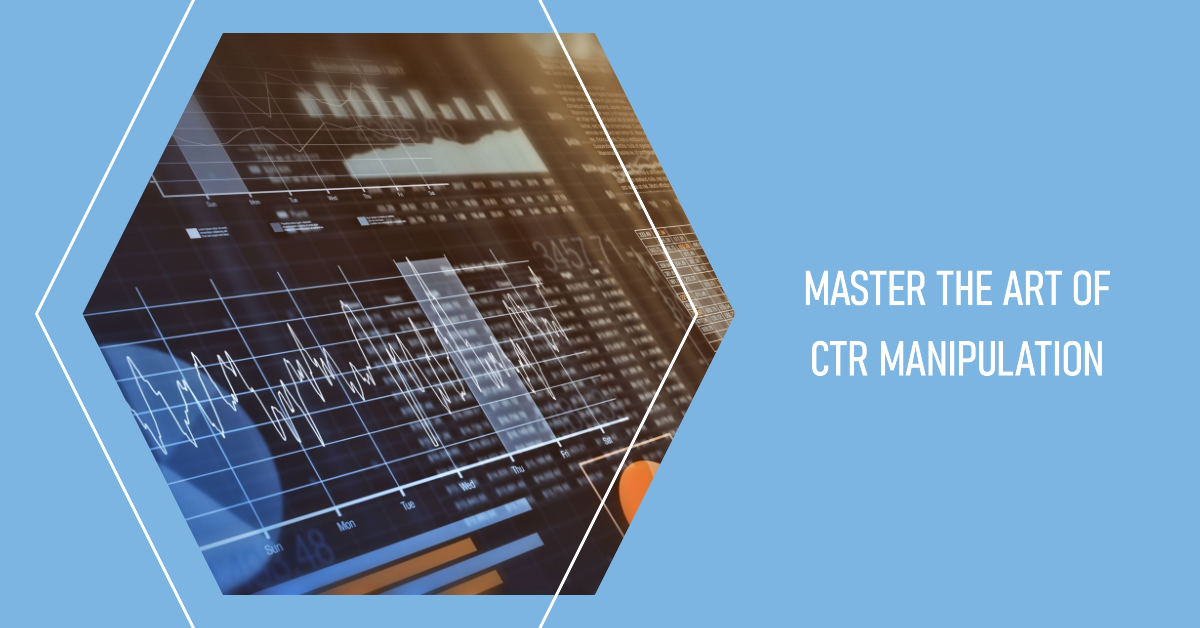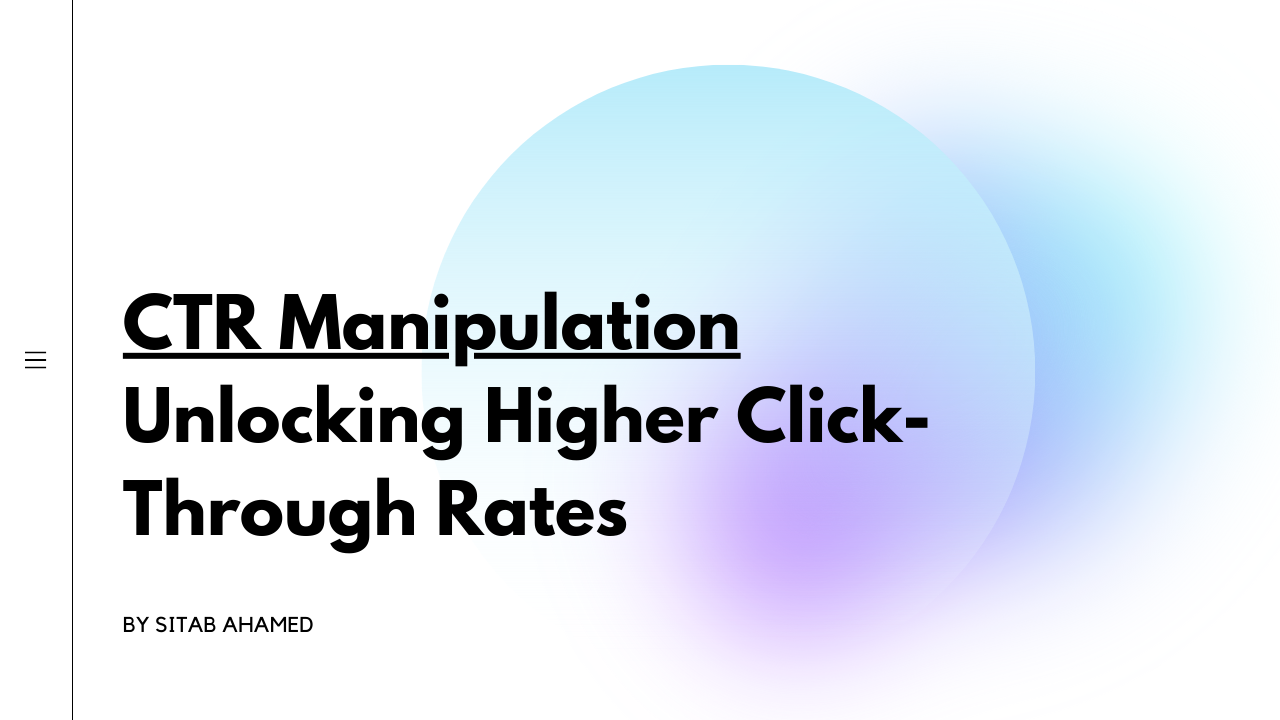CTR Adjustment: A Game Changer for Digital Projects
The increase of CTR manipulation has unquestionably transformed digital advertising methods, supplying marketing experts with devices to enhance engagement and drive traffic effectively. Strategies such as A/B testing and personalized content have shown to produce considerable enhancements in click-through rates. As brand names significantly take advantage of these methods, the ethical implications of such practices call for analysis. Balancing the quest of enhanced metrics with the demand for authentic target market links postures a critical difficulty for marketers today. What ramifications might this stabilizing act hold for the future of digital projects?
Comprehending CTR Adjustment
Although click-through price (CTR) control might look like a simple strategy in digital marketing, it incorporates an array of techniques targeted at synthetically inflating involvement metrics. This adjustment can take various forms, consisting of using click farms, bots, or deceitful ad placements that misinform consumers into clicking. These approaches can jeopardize the honesty of efficiency data, making it challenging for marketing experts to evaluate the authentic efficiency of their projects.
Moreover, CTR control elevates honest problems, as it weakens the transparency of electronic advertising. The reliance on inflated metrics can result in illinformed advertising and marketing decisions, skewing resource allowance and campaign methods. As a result, services might spend heavily in channels and techniques that show up successful however do not produce actual engagement or conversions.

Benefits of Click-Through Rate Optimization
Optimizing click-through rate (CTR) is important for boosting the efficiency of electronic advertising campaigns. A higher CTR indicates that a larger percentage of individuals are engaging with the material, which can bring about enhanced site traffic and better conversion rates. By improving CTR, brand names can successfully designate their marketing resources to campaigns that produce the highest possible returns.
One of the key advantages of CTR optimization is the capacity for enhanced ad placement and reduced expenses - CTR Manipulation. Platforms like Google Advertisements reward greater CTRs with much better advertisement positioning and minimized cost-per-click (CPC), allowing online marketers to stretch their spending plans even more. Additionally, a well-optimized CTR can boost brand presence, as greater interaction prices frequently associate with increased organic reach

Methods for Efficient CTR Control
To properly manipulate click-through prices (CTR), marketing professionals can utilize a variety of calculated methods that Discover More boost customer interaction and drive traffic. One essential method is optimizing advertisement copy to develop compelling and action-oriented language. CTR Manipulation. Using strong call-to-action (CTA) expressions motivates customers to take instant activity, enhancing the probability of clicks
An additional reliable method is A/B testing, which permits online marketers to compare various advertisement variants. By systematically evaluating performance metrics, they can recognize which elements reverberate ideal with the target audience, thereby improving their methods for optimal effect. Additionally, leveraging visually attractive graphics and succinct messaging can capture attention quickly, making it a lot more potential that users will certainly engage.

Lastly, optimizing touchdown web pages to guarantee a seamless individual experience can minimize bounce rates and motivate additional interaction, eventually cultivating greater CTR. By integrating these strategies, marketers can properly manipulate CTR to attain their project purposes.
Measuring Success in Digital Projects
Gauging success in digital projects needs a his explanation clear understanding of essential efficiency signs (KPIs) that line up with project objectives. KPIs function as measurable metrics that aid examine the performance of numerous methods utilized throughout the project. Common KPIs include click-through prices (CTR), conversion rates, cost per procurement (CERTIFIED PUBLIC ACCOUNTANT), and return on investment (ROI)
To successfully gauge success, it is critical to develop details, measurable objectives first of the project. If the main objective is to boost brand recognition, metrics such as impressions and interaction prices might be focused on. On the other hand, campaigns focused on straight sales would benefit from an extra detailed analysis of conversion rates and revenue created.
Normal analysis of these KPIs allows marketing experts to make data-driven choices, enhancing their approaches in real-time. Making use of logical devices can aid in tracking performance and determining trends, allowing for swift changes to improve project results. Eventually, a comprehensive strategy to gauging success not just highlights locations for renovation yet additionally reinforces the general efficiency of electronic advertising and marketing efforts, driving sustained development and involvement in the long term.
Future Patterns in Digital Marketing
Anticipating the future of electronic advertising and marketing exposes a landscape formed by quick technical innovations and transforming customer behaviors. As expert system and artificial intelligence remain to develop, marketers will increasingly take advantage of these modern technologies to useful reference customize campaigns at an unmatched scale. Anticipating analytics will allow brands to anticipate customer needs, maximizing advertisement positionings and content shipment in actual time.
Additionally, the rise of voice search and smart devices is transforming just how customers engage with electronic web content. Online marketers will need to adjust their methods to guarantee exposure throughout numerous platforms, consisting of voice-activated assistants. This shift requires a concentrate on conversational advertising and marketing, highlighting engagement via discussion as opposed to standard marketing tactics.
In addition, personal privacy worries are triggering modifications in information collection methods. Openness and honest information use will become paramount, driving brand names to foster trust fund and loyalty amongst customers. The ongoing evolution of social media systems will certainly likewise influence advertising methods, with a heightened emphasis on credibility and user-generated web content.
Verdict
In recap, CTR control represents a considerable development in electronic advertising and marketing approaches, using instant benefits with enhanced involvement metrics. The recurring development of digital advertising will certainly depend on this delicate interplay, shaping the future landscape of brand-consumer interactions.